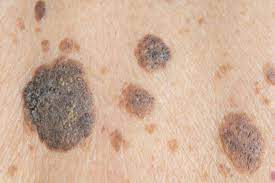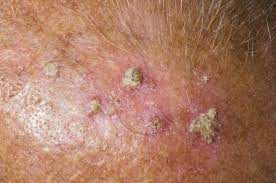General Dermatology
At Skin Surgery Medical Group our goal is to help you preserve your healthy skin as well as accurately and efficiently diagnose and treat disorders of your skin, scalp, hair, and nails. Our team of dermatologists have a great deal of experience preventing treating all conditions of the skin. We regularly treat issues related acne, hair loss, rashes, warts, eczema, rosacea, mole removal, psoriasis, skin cancer so much more. Our skin is our largest organ; let works together to keep it happy and healthy for years to come.
General Dermatology
At Skin Surgery Medical Group our goal is to help you preserve your healthy skin as well as accurately and efficiently diagnose and treat disorders of your skin, scalp, hair, and nails. Our team of dermatologists have a great deal of experience preventing treating all conditions of the skin. We regularly treat issues related acne, hair loss, rashes, warts, eczema, rosacea, mole removal, psoriasis, skin cancer so much more. Our skin is our largest organ; let works together to keep it happy and healthy for years to come.
Common Skin Condition
General Dermatology
At Skin Surgery Medical Group our goal is to help you preserve your healthy skin as well as accurately and efficiently diagnose and treat disorders of your skin, scalp, hair, and nails. Our team of dermatologists have a great deal of experience preventing treating all conditions of the skin. We regularly treat issues related acne, hair loss, rashes, warts, eczema, rosacea, mole removal, psoriasis, skin cancer so much more. Our skin is our largest organ; let works together to keep it happy and healthy for years to come.
Seborrheic Keratoses
Seborrheic Keratoses are thick,,brown, "stuck on" growths that have a warty appearance. Although these lesions may look alarming they are completely harmless. Most adults will begin to develop seborrheic keratoses in their 30's and 40's and they can develop anywhere on the skin surface. Since they are benign in nature, seborrheic keratoses do not need to be treated. From time to time they can become inflamed and irritated from clothing a jewellery, at which time your dermatologist can treat the lesion with liquid nitrogen, shave removal or simply scrapping the lesion off the surface of the skin. Once the seborrheic keratoses are removed you may notice some lightening or darkening of the skin around the removal site. This is normal and usually fades with time. These lesions can be rather resilient and do have a tendency to grow back over time.
Seborrheic Keratoses
Seborrheic Keratoses are thick,,brown, "stuck on" growths that have a warty appearance. Although these lesions may look alarming they are completely harmless. Most adults will begin to develop seborrheic keratoses in their 30's and 40's and they can develop anywhere on the skin surface. Since they are benign in nature, seborrheic keratoses do not need to be treated. From time to time they can become inflamed and irritated from clothing a jewellery, at which time your dermatologist can treat the lesion with liquid nitrogen, shave removal or simply scrapping the lesion off the surface of the skin. Once the seborrheic keratoses are removed you may notice some lightening or darkening of the skin around the removal site. This is normal and usually fades with time. These lesions can be rather resilient and do have a tendency to grow back over time.
Seborrheic Keratoses
Seborrheic Keratoses are thick,,brown, "stuck on" growths that have a warty appearance. Although these lesions may look alarming they are completely harmless. Most adults will begin to develop seborrheic keratoses in their 30's and 40's and they can develop anywhere on the skin surface. Since they are benign in nature, seborrheic keratoses do not need to be treated. From time to time they can become inflamed and irritated from clothing a jewellery, at which time your dermatologist can treat the lesion with liquid nitrogen, shave removal or simply scrapping the lesion off the surface of the skin. Once the seborrheic keratoses are removed you may notice some lightening or darkening of the skin around the removal site. This is normal and usually fades with time. These lesions can be rather resilient and do have a tendency to grow back over time.
Actinic Keratosis
Actinic Keratoses, or AK's, are caused by prolonged exposure to UV rays from the sun or indoor tanning booths. These are precancerous lesions that can be treated several different ways including; blue light treatment, cryotherapy and topical medication. AK's are one of the many reasons to visit a dermatologist regularly. Once your body starts to make these lesions, it continues to make more over time. If left untreated these lesions can evolve into a form of skin cancer known as Squamous Cell Carcinoma.
Actinic Keratosis
Actinic Keratoses, or AK's, are caused by prolonged exposure to UV rays from the sun or indoor tanning booths. These are precancerous lesions that can be treated several different ways including; blue light treatment, cryotherapy and topical medication. AK's are one of the many reasons to visit a dermatologist regularly. Once your body starts to make these lesions, it continues to make more over time. If left untreated these lesions can evolve into a form of skin cancer known as Squamous Cell Carcinoma.
Actinic Keratoses
Actinic Keratoses, or AK's, are caused by prolonged exposure to UV rays from the sun or indoor tanning booths. These are precancerous lesions that can be treated several different ways including; blue light treatment, cryotherapy and topical medication. AK's are one of the many reasons to visit a dermatologist regularly. Once your body starts to make these lesions, it continues to make more over time. If left untreated these lesions can evolve into a form of skin cancer known as Squamous Cell Carcinoma.
Moles
Moles are one of the most common skin lesions; almost all adults have at least one. In fact, most people continue to make new moles well into their 30's. Most moles are not an immediate cause for concern but remember some skin cancers, like melanoma, can grow in or surrounding a mole. When it comes to melanoma, early detection is key. We recommend patients perform an monthly self check skin exam at home in the mirror. If you notice a new or changing mole, contact your dermatologist for further evaluation and treatment.
Moles
Moles are one of the most common skin lesions; almost all adults have at least one. In fact, most people continue to make new moles well into their 30's. Most moles are not an immediate cause for concern but remember some skin cancers, like melanoma, can grow in or surrounding a mole. When it comes to melanoma, early detection is key. We recommend patients perform an monthly self check skin exam at home in the mirror. If you notice a new or changing mole, contact your dermatologist for further evaluation and treatment.
Moles
Moles are one of the most common skin lesions; almost all adults have at least one. In fact, most people continue to make new moles well into their 30's. Most moles are not an immediate cause for concern but remember some skin cancers, like melanoma, can grow in or surrounding a mole. When it comes to melanoma, early detection is key. We recommend patients perform an monthly self check skin exam at home in the mirror. If you notice a new or changing mole, contact your dermatologist for further evaluation and treatment.
Acne
A little known fact: acne is the most common skin condition in the US. Acne cases can range from mild, blackhead and scattered whiteheads, to severe deep painful nodules and cysts. Acne can develop anywhere on the body; most commonly on the face, back, check, shoulders and buttocks. Thankfully, there are several ways to treat acne from topical creams which are applied daily to oral treatment such as birth control, antibiotics and Isotretinoin,
Browse Our Website
Contact Information
Phone: 858-292-5101
Fax: 858-292-1915
Address:
5222 Balboa Ave, Floors 5 & 6, San Diego, CA 92117
Business Hours
- Mon - Thu
- -
- Fri - Sun
- Closed








